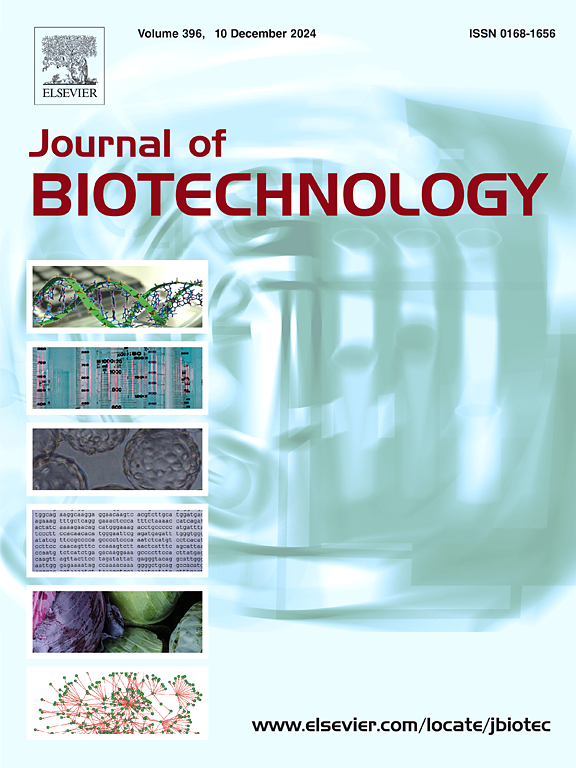利用sacb介导的木林komagataeibacter xylinus基因编辑系统,探索细菌纤维素合酶的功能。
IF 3.9
2区 生物学
Q2 BIOTECHNOLOGY & APPLIED MICROBIOLOGY
引用次数: 0
摘要
细菌纤维素(BC)是一种微生物多糖,广泛应用于生物技术、食品、医药等行业。虽然现有的基因工具已经为产生bc的菌株的基因操作奠定了坚实的基础,但在提高编辑效率、简化操作程序和实现无疤痕修饰方面仍有改进的空间。在本研究中,我们开发了一个基于sacb的系统pK18mobsacB,实现了无标记基因编辑,效率高达83.33%。利用该系统成功地对木林komagataebacter xylinus CGMCC 2955进行了基因的缺失、插入和替换。随后,利用sacb为基础的系统,探讨了细菌纤维素合酶在BC合成中的功能和结构。发现bcs I操纵子在BC合成中起重要作用。bcs II和bcs III操纵子区域的缺失,无论是单独的还是联合的,都导致了BC膜的纤维直径和结晶度的增加。本研究建立的基于sacb的系统及其应用为利用合成生物学技术对BC产菌进行修饰提供了有价值的工具和理论基础,从而促进BC的可持续应用和创新产品的开发。本文章由计算机程序翻译,如有差异,请以英文原文为准。
Utilizing the SacB-mediated gene editing system in Komagataeibacter xylinus to explore the function of bacterial cellulose synthase
Bacterial cellulose (BC) is a microbial polysaccharide, which is widely used in biotechnology, food, medicine, and other industries. Although existing genetic toolkits have laid a solid foundation for the genetic manipulation of BC-producing strains, there is still room for improvement in enhancing editing efficiency, simplifying operational procedures, and achieving scarless modifications. In the present study, we developed a SacB-based system, pK18mobsacB, to achieve marker-free gene editing with an efficiency of up to 83.33 %. Gene deletion, insertion, and replacement were successfully performed in Komagataeibacter xylinus CGMCC 2955 using this system. Subsequently, the SacB-based system was used to explore the function of bacterial cellulose synthase in the synthesis and structure of BC. It was found that the bcs I operon played an important role in BC synthesis. The deletion of the bcs II and bcs III operon regions, either individually or in combination, led to an increase in the fiber diameter and crystallinity of the BC films. The SacB-based system and its applications established in this study provide valuable tools and a theoretical foundation for the modification of BC-producing strains using synthetic biology, thereby facilitating the sustainable application of BC and the development of innovative products.
求助全文
通过发布文献求助,成功后即可免费获取论文全文。
去求助
来源期刊

Journal of biotechnology
工程技术-生物工程与应用微生物
CiteScore
8.90
自引率
2.40%
发文量
190
审稿时长
45 days
期刊介绍:
The Journal of Biotechnology has an open access mirror journal, the Journal of Biotechnology: X, sharing the same aims and scope, editorial team, submission system and rigorous peer review.
The Journal provides a medium for the rapid publication of both full-length articles and short communications on novel and innovative aspects of biotechnology. The Journal will accept papers ranging from genetic or molecular biological positions to those covering biochemical, chemical or bioprocess engineering aspects as well as computer application of new software concepts, provided that in each case the material is directly relevant to biotechnological systems. Papers presenting information of a multidisciplinary nature that would not be suitable for publication in a journal devoted to a single discipline, are particularly welcome.
 求助内容:
求助内容: 应助结果提醒方式:
应助结果提醒方式:


